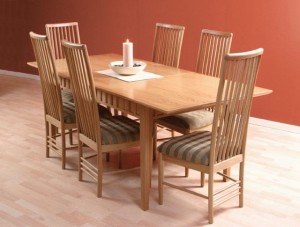Wood continues to age naturally over its lifetime – and the colour can sometimes move noticeably. This happens gradually over time – different woods seem to age at different speeds. The change that happens is difficult to notice when you are living with the product on a daily basis. It’s completely natural and difficult to guarantee against.
Indeed in an ideal world if we could furnish each room with all wooden cabinet products from the one collection, at the one time, in this way colours will be a close match. However this rarely happens. So here are a few tips for avoiding problems caused by the natural process of wood changing in colour.
- Firstly – all natural wood is unique and so each wooden item will have variances from other pieces in the same range. If you really hate the thought of this buy plastic furniture.
- Avoid (if possible) buying some products and coming back years later to buy the matching dressing table – the range may have been discontinued and matching becomes a greater nightmare.
- Please expect a slight and temporary colour matching issue when adding a piece to an existing collection you have at home. Even if they are from the one range, the exposure to light will have changed the older pieces somewhat.
- In extension tables – be aware that when the table is left unextended for a long period of time the insert piece can often seem a different shade when put into place. The only solution is to expose the insert to some natural light and in this way it will change in colour as does the rest of the product. Alternatively throw a table cover across the whole table, protecting it from the effects of natural light. (Kind of defies the point of buying a wooden table in the first place though…!)
- Lamps, decorations and ornaments on wooden surfaces can sometimes leave a patch under them – i.e. the area under the ornament hasn’t been exposed to sunlight and therefore has remained closer to the original colour. Therefore move ornaments and display items occasionally to prevent obvious marking.
- As I’ve said, if the thought of woods changing in colour sends shivers up your spine, buy plastic furniture which doesn’t change in colour. Alternatively choose a wood type less prone to colour changes. For example oak turns a little richer and deeper in colour over time. Walnut can turn from a deep dark brown to a golden brown colour.
- If the idea of wood maturing in colour isn’t your idea of “nature at it’s best” then perhaps consider painting or sanding back the product and re-staining it. Note heavy stain won’t completely stop woods from maturing in colour but they will limit its appearance somewhat.
Finally in my humble opinion, quality furniture always looks well in any room regardless of whether each piece is an exact match of another. An eclectic selection of furniture and wood colours always seems to mix well in domestic environments. People create their own wonderful homes and attention to detail can make some homes spectacular – wood colours add to this environment. Consumers can call in to the Drumbriston Furniture outlet on the Dublin Rd, Monaghan Town for a full selection of these and more products. For more information click on www.drumbristonfurniture.ie For trade contract enquiries please get in touch with us on this site.
